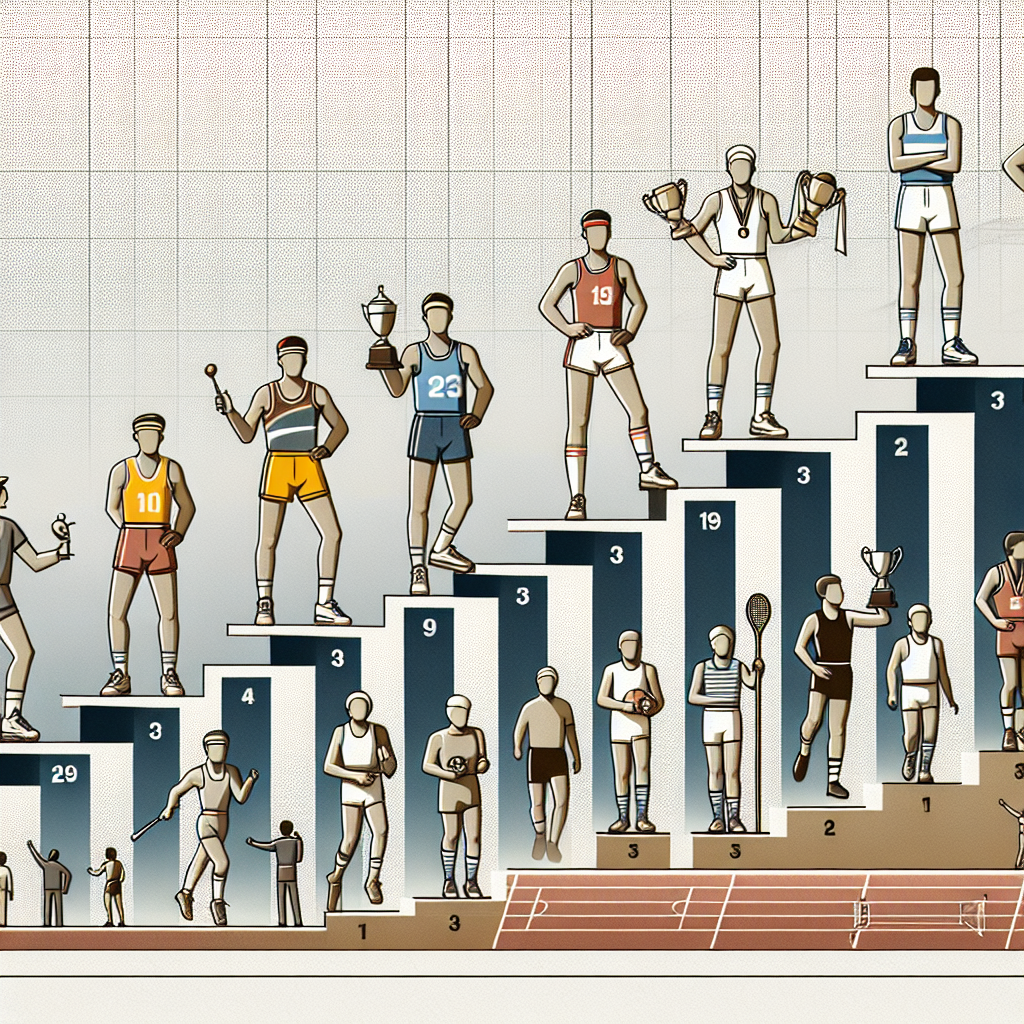The world of sports has always been intertwined with competition, loyalty, and excellence. At the heart of this competitive landscape lies the rankings that categorize athletes and teams based on their performance. Over the decades, the evolution of sports rankings has not only transformed the way fans engage with their favorite games but also how players and teams build their legacies. This article explores the significant milestones in the evolution of sports rankings over the decades, examining how they have adapted to changes in technology, data analytics, and public interest.
The Early Days of Sports Rankings
In the early 20th century, sports rankings were rudimentary at best. Most information circulated through newspapers, with journalists ranking teams and athletes based on subjective assessments rather than empirical data. For instance, sports like boxing and horse racing leveraged informal rankings influenced primarily by public opinion and expert commentary. These early systems lacked consistency, often leading to regional biases and varying opinions about which athletes or teams deserved recognition.
As the popularity of sports grew, particularly in America during the mid-20th century, more standardized systems began to emerge. The introduction of the AP Poll in 1936 by the Associated Press was a hallmark moment that added a structured methodology to college football rankings. While still not perfect, this ranking system utilized a panel of sportswriters which brought credibility to the rankings and created a foundation for how teams would be evaluated in the future.
The Statistical Revolution in the 1980s
The 1980s marked the dawn of a new era in sports rankings with the increased use of statistical data as a tool for evaluation. The introduction of more sophisticated data collection methods allowed for a deeper analysis of player and team performance. This shift was evident in sports such as basketball, with the NBA adopting metrics that considered not just points scored but a plethora of stats including rebounds, assists, and defensive plays, paving the way for rankings that were more reflective of actual performance.
Simultaneously, the fantasy sports craze that exploded during this decade fueled a public appetite for detailed statistics. Fans wanted comprehensive insights, and rankings based on data-driven approaches became more appealing. As a result, sports analysts started to leverage these insights, leading to the birth of advanced metrics that would refine and redefine rankings throughout the ensuing decades.
The Digital Age: The 1990s to 2000s
The arrival of the Internet revolutionized how sports rankings were disseminated and followed. Websites emerged that not only provided real-time updates but also offered algorithms that calculated rankings based on an assortment of performance metrics. ESPN and other major networks began integrating live updates and statistical analyses to keep sports fans engaged. This era also saw the rise of various rankings like the FIFA World Rankings for soccer, which globalized competitiveness in sports.
Additionally, the 2000s introduced the idea of power rankings across multiple sports. These rankings considered not just win-loss records but also included factors like strength of schedule, injuries, and player form. The introduction of metrics such as “Quality Start” in baseball and “PER” in basketball were indicative of the intricacies being built into ranking systems. As data analytics took center stage and algorithms became more sophisticated, fans of various sports began demanding official rankings that were both informative and reflective of their sport’s complexities.
The Impact of Social Media and Big Data (2010s)
The 2010s accelerated the evolution of sports rankings, thanks in large part to social media and big data. Platforms like Twitter and Facebook not only provided a new medium for public discourse but also facilitated real-time engagement with rankings. Fans became more vocal, influencing what types of rankings were developed and how they were interpreted, leading to a more democratic method of evaluating sports performance.
Big data further changed the landscape, allowing teams to purchase and analyze vast amounts of player and game data. Performance analytics software emerged, allowing teams to quantify player performance in ways never thought possible. As a consequence, sports leagues created independent ranking systems based on nuanced performance metrics. For instance, within the National Football League, enhanced statistics like yards after contact became essential in crafting team rankings and player evaluations. The result was a more transparent and highly-evolving ranking system that provided fans with the statistical groundwork to support their opinions.
The Current Landscape of Sports Rankings (2025 and Beyond)
As of 2025, the evolution of sports rankings is marked by the integration of artificial intelligence (AI) and machine learning. These technologies have optimally enhanced the accuracy and efficiency of ranking systems. AI models analyze thousands of games and player interactions, providing real-time, predictive rankings that not only reflect past performances but also forecast future outcomes based on current data trends.
Furthermore, the globalization of sports has influenced how teams are ranked in a broader context. With international leagues gaining a foothold, formats like the UEFA coefficient in soccer have come to represent how teams across continents compare. The importance of global competition continues to reshape sports rankings, as leagues look beyond their immediate environments for talent and success metrics.
Additionally, the element of fan engagement has taken a new form, as fans now have the opportunity to interactively influence rankings through voting systems in events such as the All-Star Games. The incorporation of augmented reality (AR) applications enables fans to visualize rankings and players’ performances in real-time, creating an immersive experience that deepens fan investment in rankings.
Creating a ranking system that works for both the athletes and the fans is a continual challenge. In 2025, the rankings must address bias, whether it be due to geographic disparities or favoritism towards certain teams. Therefore, transparency in how rankings are formulated is more critical than ever to ensure fairness and maintain credibility in this evolving landscape.
Conclusively, the evolution of sports rankings has witnessed a remarkable transformation from subjective assessments to data-driven and AI-enhanced methodologies. Whether through print media in the early 20th century or through advanced analytics in the current age, rankings remain an integral part of sports culture. The future will likely see even more innovation, particularly as technology continues to diminish the barriers within sports, creating a truly global and interconnected ranking system.
FAQs
1. How did sports rankings begin?
Sports rankings began in the early 20th century, primarily through journalist opinions in newspapers. These subjective assessments laid the groundwork for more structured systems like the AP Poll introduced in 1936.
2. What technological advances have influenced sports rankings?
The advent of the Internet, big data, AI, and machine learning have been significant technological influences that transformed sports rankings into data-driven, real-time evaluations.
3. What are some examples of sports rankings today?
Today, sports rankings include the FIFA World Rankings in soccer, the AP Poll in college football, and various advanced metrics utilized in leagues like the NBA and NFL, which assess team and player performance through extensive data analysis.
4. How do fan opinions affect sports rankings?
With the rise of social media and interactive platforms, fan opinions significantly influence rankings, seen in voting systems for All-Star games and other events, allowing fans to have a direct impact on athlete recognition.
5. What can we expect in the future regarding sports rankings?
In the future, we can expect further integration of technology, especially in AI and AR, to refine how rankings are calculated, ensuring they remain accurate, engaging, and transparent for fans and athletes alike.












